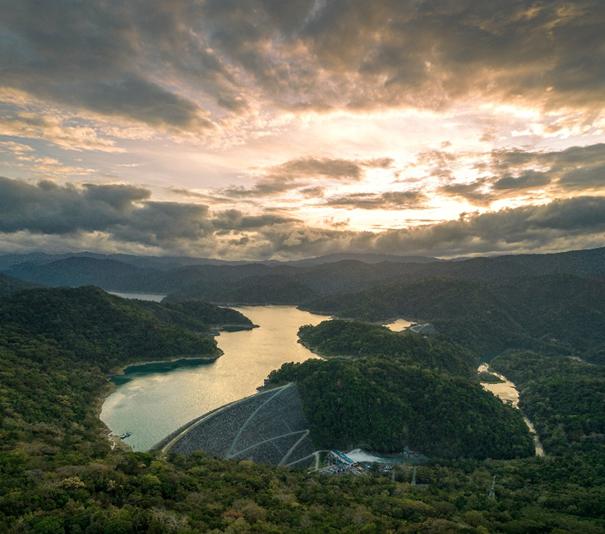Manila Water to increase capacity through alternative water sources

Manila Water continues to push for the development of new water sources amid the continuing increase in population and demand, and the effects of climate change on Angat Dam, which is Metro Manila’s main water source. The company banks on its five-year Service Improvement Plan to ensure water security, which includes building vital infrastructure in alternate water sources such as Laguna Lake, among other efforts. Contributed photo
MANILA, Philippines — Since it began operating the water and wastewater system of eastern Metro Manila and Rizal Province, East Zone concessionaire Manila Water has endeavored to deliver a 24/7 water supply to its current 7.4 million customers.
Even during the worst of the COVID-19 pandemic in 2020 and 2021, when most of its raw water came from the almost 50-year-old Angat Dam, Manila Water kept delivering water to homes and important public services like hospitals and healthcare centers without interruption.
New water sources must be found to maintain the continuity of 24/7 service and not be completely dependent on Angat Dam in light of a 3% yearly increase in water consumption and the requirement for an additional supply of 15% during peak summer months.
Manila Water’s five-year strategy for service enhancement, starting in 2023 and running through 2027, has a strong emphasis on ensuring a reliable supply of clean water. The plan’s other tenets include service reliability, user-friendliness, and eco-friendliness.
READ: Manila Water launches first microtunneling project in Mandaluyong City
“These major pillars represent the projects that Manila Water will undertake to ensure continued water and wastewater services for the increasing population of the East Zone and Rizal Province which continues to grow at an annual rate of 2-3%. Manila Water is earmarking P181 billion for the five-year plan, of which P105 billion are allotted for its massive capital expenditure program,” shared Manila Water President and CEO Jocot De Dios.
Since climate change is having a significant impact on water sources and supply, Manila Water has started drawing water from Laguna Lake to meet consumer demand. The Cardona Water Treatment Plant, which uses water from the lake’s middle region, is already operational, with a daily output of 100 million liters.
The Laguna Lake Water System includes tapping the eastern portion of the lake called the East Bay Water Supply Project Phases 1 and 2 with a total capacity of 250 MLD. Construction of the Antipolo Water System is also underway with the Wawa Calawis Water Supply Project. Phase 1 will provide an initial 80 MLD and an additional 438 MLD is expected to be completed in 2025.
READ: Manila Water ensures 24/7 supply to public service institutions
Manila Water continues to coordinate closely with the Metropolitan Waterworks and Sewerage for the Sumag River Diversion Project and the Umiray-Angat Transbasin Rehabilitation Project, designed to provide additional water to the Angat water system.
While Manila Water customers receive a 24/7 water supply, services must continue even if there are natural calamities and disasters. Therefore, retrofitting and ensuring the structural integrity of facilities are vital components of projects to address the impact of the so-called Big One. In addition, regular rehabilitation of mainlines, installation of redundant water lines, and the construction of emergency reservoirs across the concession will ensure that the impacts of a big earthquake on the water supply will be mitigated.
Programs designed to promote environmental sustainability include the construction of wastewater treatment facilities compliant with the new standards on biological nutrient removal and the laying of sewer networks to ensure that wastewater undergoes proper treatment before it is discharged back into receiving water bodies.
READ: Manila Water meets regulatory standard, customer demand for 24/7 water supply
“Implementation of Manila Water’s service improvement plan will ensure that water supply for East Zone customers will continue to remain 24/7 and at the same time, adequate wastewater and sanitation services will be available for those residing in San Juan, Mandaluyong, Pasig, Taguig, Pateros, Marikina, portions of Quezon City and Manila as well as Rizal Province in the coming years,” De Dios added.